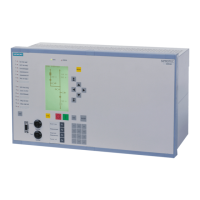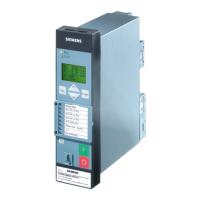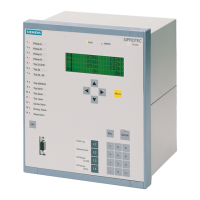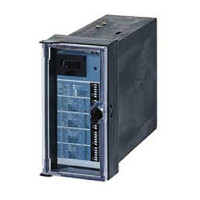Depending on the parameter 613 50N/51N/67N w., the device can either operate using measured values IN
or the quantities 3I0 calculated from the three phase currents. Devices featuring a sensitive ground current
input generally use the calculated quantity 3Ι
0
.
The directional orientation of the function is influenced by parameter 201 CT Starpoint (see Section
2.1.3 Power System Data 1).
Measurement Methods
The comparison values to be used for the respective element can be set in the setting sheets for the elements.
•
Measurement of the Fundamental Harmonic (standard method):
This measurement method processes the sampled values of the current and filters in numerical order the
fundamental harmonic so that the higher harmonics or transient peak currents are rejected.
•
Measurement of the True RMS Value
The current amplitude is derived from the sampled value in accordance with the definition equation of
the true RMS value. This measurement method should be selected when higher harmonics are to be
considered by the function (e.g. in capacitor bank).
The type of the comparison values can be set under the following addresses:
67-3 element Address 1527 67-3 MEASUREM.
67-2 element Address 1520 67-2 MEASUREM.
67-1 element Address 1521 67-1 MEASUREM.
67-TOC element Address 1522 67-TOC MEASUR.
67N-3 element Address 1627 67N-3 MEASUREM.
67N-2 element Address 1620 67N-2 MEASUREM.
67N-1 element Address 1621 67N-1 MEASUREM.
67N-TOC element Address 1622 67N-TOC MEASUR.
Direction Characteristic
The direction characteristic, i.e. the position of the ranges “forward”and “reverse” is set for the phase direc-
tional elements under address 1519 ROTATION ANGLE and for the ground directional element under address
1619 ROTATION ANGLE. The short-circuit angle is generally inductive in a range of 30° to 60°. This means
that usually the default settings of +45° for the phase directional elements and -45° for the ground directional
element can be maintained for the adjustment of the reference voltage, as they guarantee a safe direction
result.
Nevertheless, the following contains some setting examples for special applications (Table 2-8). The following
must be observed: With the phase directional elements, the reference voltage (fault-free voltage) for phase-
ground- faults is vertical on the short-circuit voltage. For this reason, the resulting setting of the angle of rota-
tion is (see also Section 2.3.8 Determination of Direction):
Ref. volt. angle of rotation = 90 - φ
sc
Phase directional element (phase-
to-ground fault)
With the ground directional element, the reference voltage is the short-circuit voltage itself. The resulting
setting of the angle of rotation is then:
Ref. volt. angle of rotation = -φ
sc
Directional ground element (phase-
to-ground fault).
It should also be noted for phase directional elements that with phase-to-phase faults, the reference voltage is
rotated between 0° (remote fault) and 30° (close-up fault) depending on the collapse of the faulty voltage.
This can be taken into account with a mean value of 15°:
Ref. volt. angle of rotation = 90 - φ
sc
-15° Phase directional element (phase-
to-phase fault)
Functions
2.3 Directional Overcurrent Protection 67, 67N
SIPROTEC 4, 7SJ62/64, Manual 99
C53000-G1140-C207-8, Edition 08.2016

